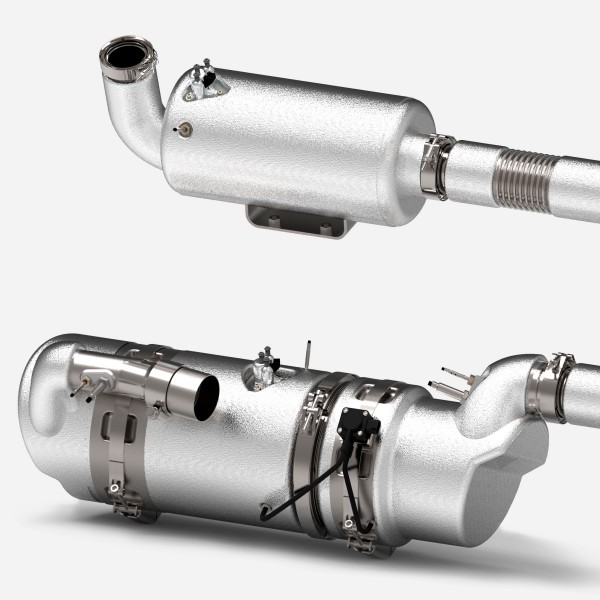Overview
Catalysts, Filters, Mixers or Sensors – Select Your Ultimate Component Combination and Open Up Better Emissions System Efficiency
Donaldson offers several state-of-the-art component options for emission control systems, in multiple combinations. As the industry is now migrating to an approach that, in some situations, combines these features into integrated systems, we prioritize flexibility.
This page is intended for technical experts. This includes several commonly used acronyms and chemical formulas. Please use the list if you need help keeping them all straight.
- AMOX - Ammonia Oxidation
- DEF - Diesel Exhaust Fluid
- DOC - Diesel Oxidation Catalyst
- DPF - Diesel Particulate Filters
- H₂O - Water
- N₂ - Nitrogen
- NO - Nitrogen Oxide
- NH₃ - Oxides of Nitrogen with Ammonia
- NO₂ - Nitrogen Dioxide
- NOₓ - Oxides of Nitrogen
- PM - Particulate Matter
- SCR - Selective Catalytic Reduction
- SOF - Soluble Organic Fraction
Features

Diesel Oxidation Catalyst (DOC)
Made of cordierite or corrugated metal foil, the DOC is a flow-through substrate with a catalyst coating. DOCs oxidize carbon monoxide and hydrocarbons. They also convert NO to NO2 to assist in the fast SCR reaction. Furthermore, DOCs partially reduce soluble organic fraction (SOF) particulate matter.

Diesel Particulate Filters (DPF)
DPF systems remove particulate matter (PM) through either passive or active regeneration (we have extensive experience in developing DPFs for both scenarios). DPFs are typically made of cordierite or silicon carbide and are wall-flow substrates, often with a catalyst coating. The wall-flow requires exhaust gas to flow through alternating channel walls and then onto other system components. Most DPFs need to be serviced occasionally to remove ash, so systems need to be designed to be serviceable.

AdBlue® / Diesel Exhaust Fluid (DEF) Mixers
To initiate a catalytic reaction and support NOx reduction, AdBlue / DEF is injected into the exhaust stream via a mixer. The primary function is to fully blend the AdBlue / DEF with the exhaust flow without generating deposits. AdBlue / DEF is an aqueous urea solution and is decomposed into ammonia gas that is equally distributed with the exhaust gas prior to reaching the SCR catalyst face.
AdBlue / DEF mixers are typically a combination of an injector plus a mixer – the goal is to create the smallest overall package size with the most effective mixing, without generating deposits and excessive backpressure. Donaldson has an extensive portfolio of mixer solutions to meet specific OE requirements.

Selective Catalytic Reduction (SCR)
Made of cordierite, an SCR is a flow-through substrate with a catalyst coating that converts and reduces oxides of nitrogen (NOx) with ammonia (NH3) to form harmless water (H2O) and nitrogen (N2). An ammonia oxidation (AMOX) catalyst cleans up any remaining ammonia.

Downstream Mixer
To accommodate less than perfectly mixed NOxat the downstream NOx sensor location, a mixer is often incorporated in the outlet of the SCR to ensure accurate tailpipe sensor readings. These mixers are typically flow modification devices that help to ensure accurate NOx readings while minimizing backpressure impact.
Sensors
Sensors for temperature, pressure, NOx and ammonia are commonly used in aftertreatment systems. Donaldson provides porting options for these sensors that can be easily added into muffler bodies or upstream / downstream pipes. OEMs typically specify and incorporate the sensors and define the sensor requirements. They can then use the data generated to evaluate system performance and for diagnostic assessments.
You May Like...
Articles
Resources







